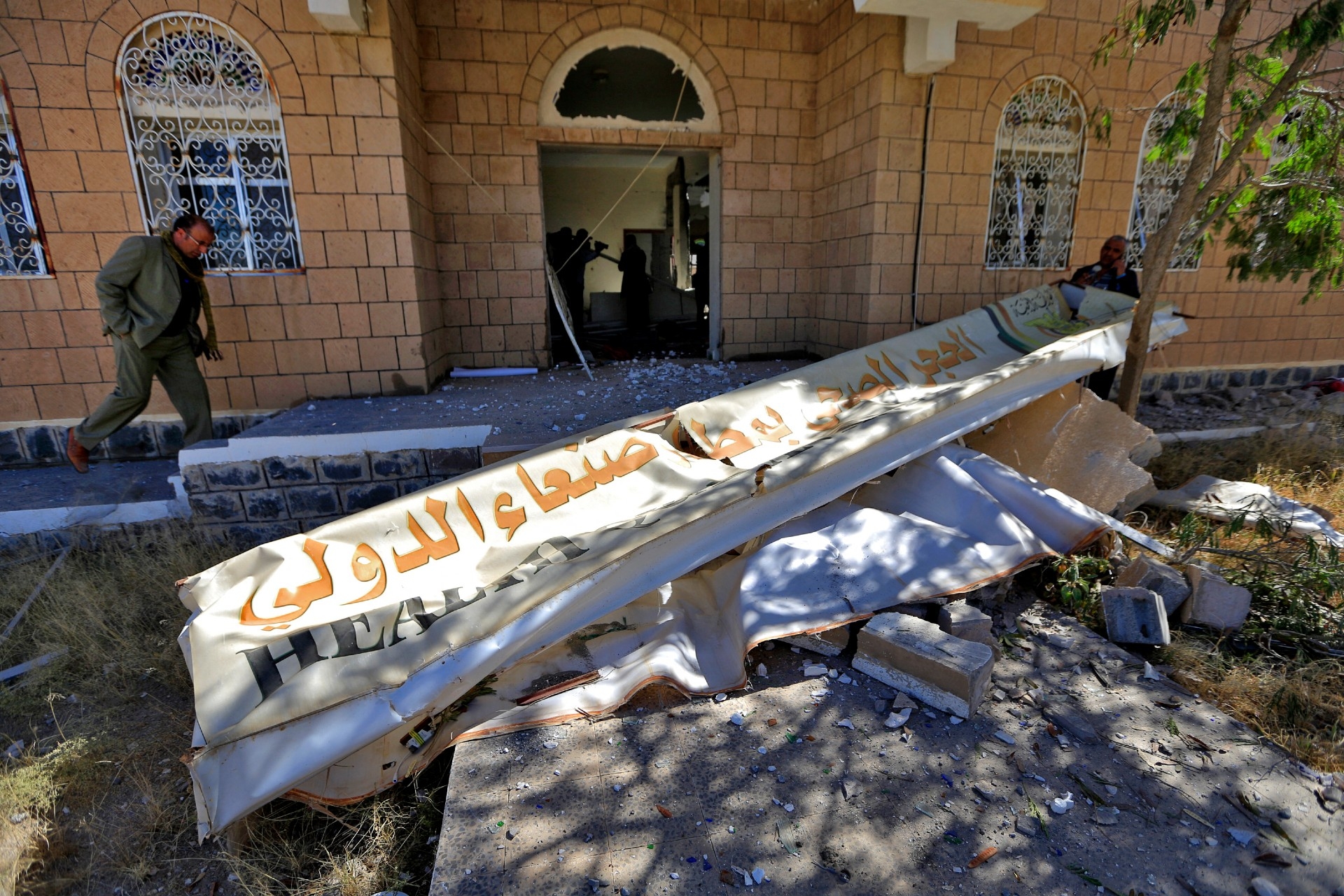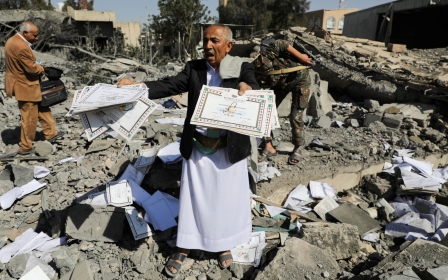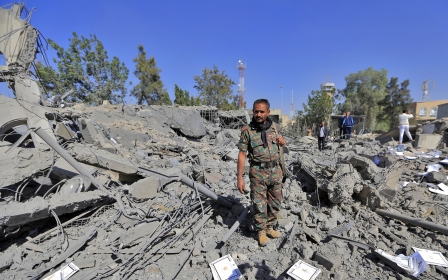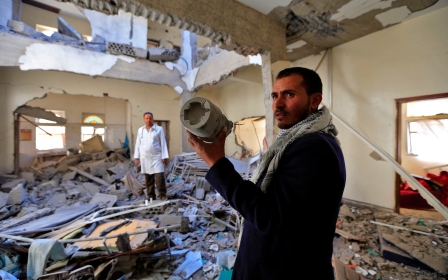Yemen: Houthis resume UN flights at Sanaa airport

Yemen's Sanaa airport temporarily resumed permitting United Nations and international organisations' flights on Monday, according to the aviation authority run by the Houthi administration in control of the airport and the north of the country.
The temporary resumption of flights comes a week after the aviation authority paused air traffic and the Saudi-led coalition fighting the Houthis hit the airport with air strikes, reportedly destroying communications and navigation capabilities as it struck Houthi targets.
New MEE newsletter: Jerusalem Dispatch
Sign up to get the latest insights and analysis on Israel-Palestine, alongside Turkey Unpacked and other MEE newsletters
The Houthi rebels accused Saudi Arabia's military coalition of preventing the replacement of the necessary equipment to resume flights.
The closure of the airport and the 20 December air strikes came a day after the Saudi-led coalition said it destroyed a drone launched from the Yemeni airport and aimed at civilians at Saudi Arabia's King Abdullah airport in Jizan, near the border with Yemen.
"The operation was mounted in response to the threat and use of airport infrastructure to carry out cross-border attacks," according to the official Saudi Press Agency.
A Sanaa aviation worker told Middle East Eye last week: "The air strikes targeted the tarmac and several buildings in the airport including the customs department, and a fire broke out."
More than half of Yemenis are reliant on some form of humanitarian aid, some of which enters the country through Sanaa airport. Aid workers had urged the airport to reopen following last week's air strikes and closure.
Stepping up attacks
Saudi Arabia and its allies, most prominently the United Arab Emirates, intervened in Yemen in 2015 after the Iran-aligned Houthi movement ousted the internationally recognised government of President Abd Rabbuh Mansour Hadi from Sanaa. The coalition immediately began a bombing campaign aimed at rolling back Houthi gains.
In recent years, Houthi forces have stepped up drone and missile attacks on Saudi Arabia.
A UN Development Programme report last month said the war will have claimed 377,000 lives by the end of the year, through both direct and indirect impacts.
For months, the two sides have been fiercely fighting around the city of Marib, east of Sanaa, where Houthi forces are seeking to take over key Yemeni government strongholds.
Still, while the Houthis have made major advances during the past couple of months, recent Saudi-led air strikes have so far managed to stem the Houthi advance.
Middle East Eye delivers independent and unrivalled coverage and analysis of the Middle East, North Africa and beyond. To learn more about republishing this content and the associated fees, please fill out this form. More about MEE can be found here.





